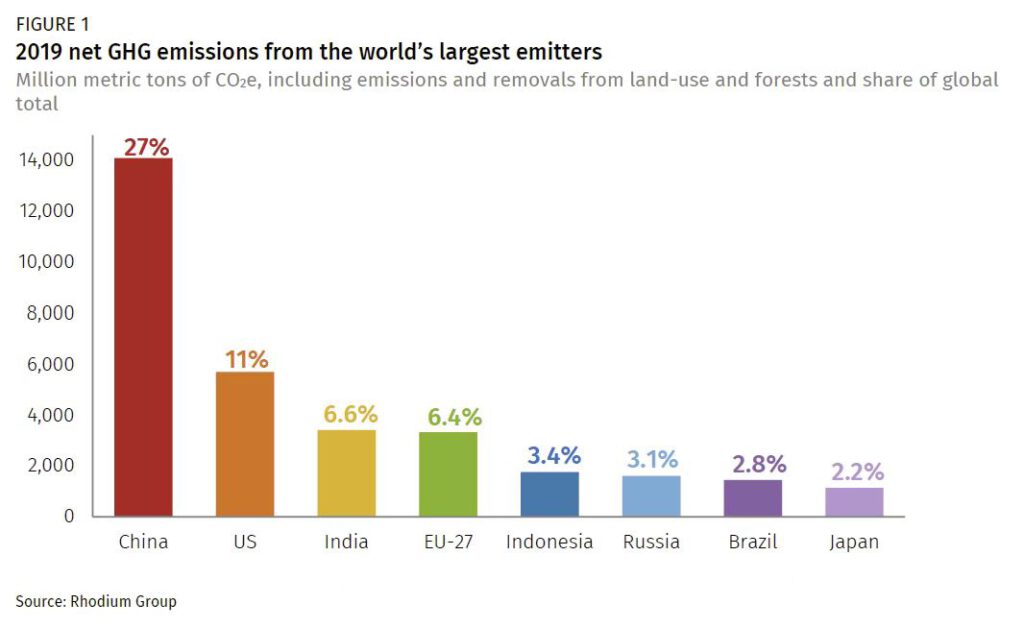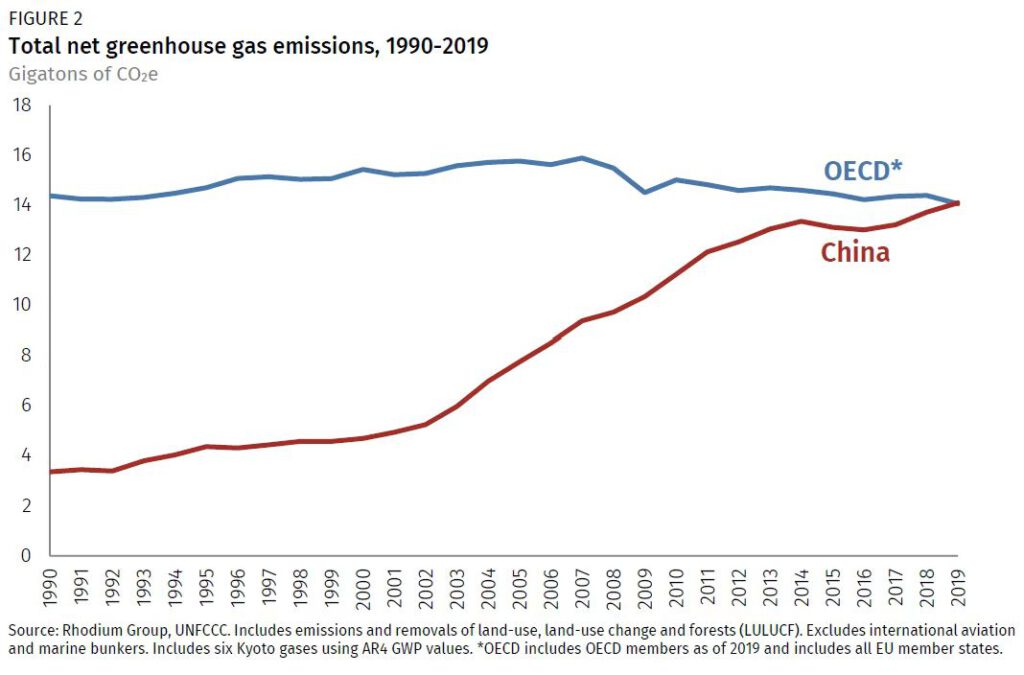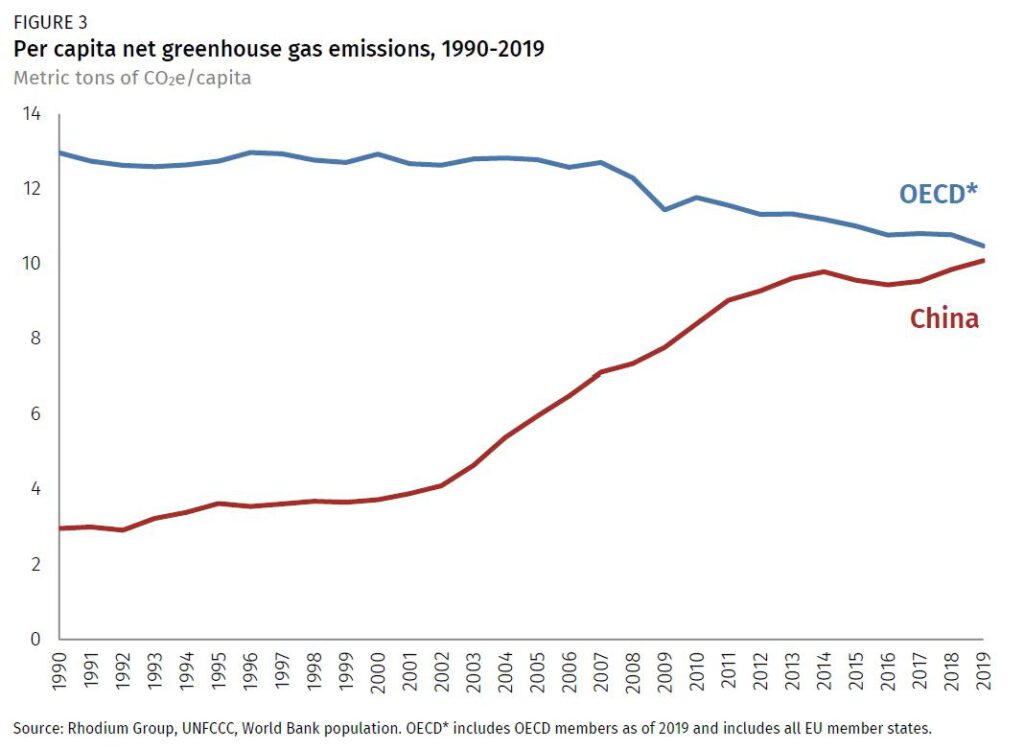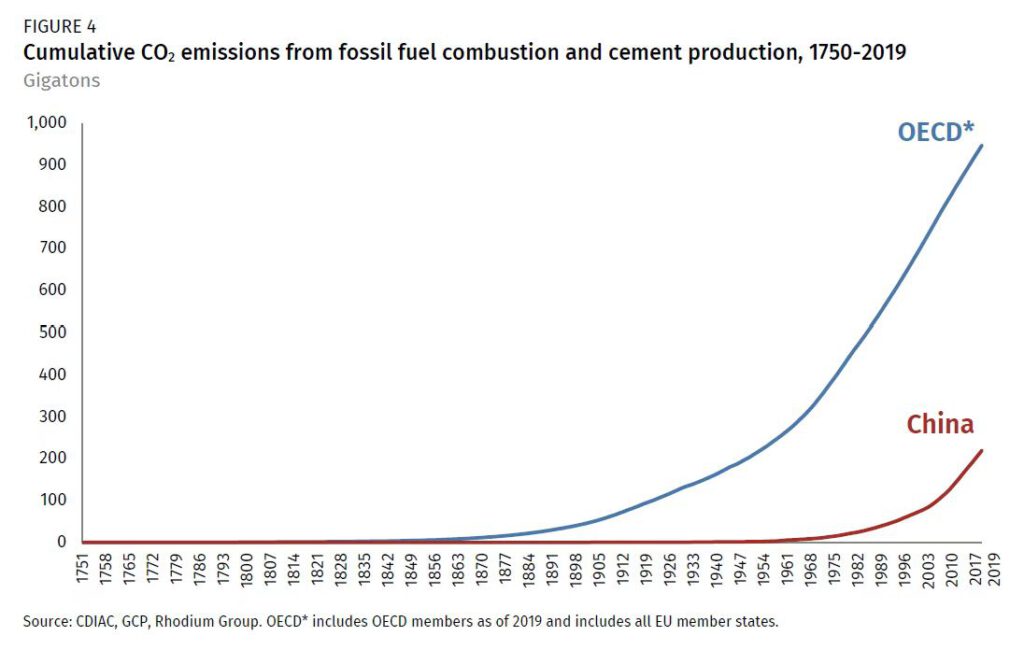On 6 May 2021, Rhodium Group, a New York-based advisory firm, published research titled China’s Greenhouse Gas Emissions Exceeded the Developed World for the First Time in 2019. “Yes, China is still categorized as a developing nation by WTO, they manufacture a lot of our products and so on. But that’s of course no excuse for running future and present living conditions. We can’t solve the climate crisis unless China drastically changes course,” accused Greta Thunberg, who has fundamental understanding issues on China’s situation, though got 14 A-grades and 3 B-grades in secondary education, according to Bloomberg.
According to the research, China contributed over 27% of total global emissions and the US was the second-largest emitter at 11%. For the first time, India edged out the EU-27 for third place, coming in at 6.6%. But on the other hand, the report also pointed out that, as a large country with a population of 1.4 billion, China’s per capita carbon emissions are still far below that of developed countries. Specifically, China’s per capita carbon emissions in 2019 was about 10.1 tons, slightly lower than the OECD average, and far below the 17.6 tons in the United States, which ranks first in the world in per capita carbon emissions.

How should China view the so-called fair reduction plan advocated by some western countries? Ding Zhongli, Vice-president of the Chinese Academy of Sciences, had already given his answer in 2010 when attending a Chinese talk show, “are the Chinese human beings? This is the fundamental question. If so, then why should a Chinese person emit less carbon than anyone else? Are you taking a country as a unit or a person as a unit when calculating carbon emissions? My understanding of fairness is that I think emission rights are basic human rights. Therefore, I say that everyone should have, roughly, equal liberty to emit.”

China has played the role of producing goods for all over the world for decades, which inevitably causes more carbon emissions. And China aims to reduce emissions while continuing to be the stable provider to the world. China’s achievements in energy conservation and emission reduction in the past few decades are obvious to all. China’s carbon emissions per unit of GDP fell by 18.2% in 2019 compared with 2015 and 48.1% compared with 2005, basically reversing the rapid growth of carbon emissions. Between 2005 and 2018, China’s forest cover and forest stock increased by 45.09 million hectares and 5.10 billion cubic meters, making China the fastest greening country during the period.
“We should never really blame China as the worst emitter on earth… A lot of the stuff we (in the West) consume is produced in China and the emissions are counted into the Chinese carbon emissions record. If you take into account those consumption-based emissions, our record isn’t that good,” said Reinhard Steurer, a climate scientist and associate professor at the University of Natural Resources and Life Sciences in Vienna, in an interview with CNN.

On September 22, 2020, President Xi Jinping delivered an important speech at the 75th session of the UN General Assembly (UNGA 75) and pointed out: “China will increase its nationally determined contribution, adopt more powerful policies and measures, strive to reach its peak carbon dioxide emissions by 2030, and strive to achieve carbon neutrality by 2060.”Indeed, China has regarded the promotion of green and low-carbon circular development as an important strategic measure for the construction of ecological civilization and the promotion of high-quality and sustainable development for a while.
In the past ten years, China has promoted the whole society to accelerate the transition to green and low-carbon through a series of measures such as continuously adjusting the industrial structure, optimizing the energy structure, improving the efficiency of energy resource utilization, and increasing forest carbon sinks.

As of 2019, China’s GDP has increased by about four times compared with 2005, and hundreds of millions of rural poor people across the country have basically been lifted out of poverty. During the same period, energy consumption per unit of GDP has been reduced by 42.6%, and carbon dioxide emissions per unit of GDP have fallen by 48%, exceeding the commitments made in 2009. The 45% high-line target is equivalent to reducing carbon dioxide emissions by approximately 5.62 billion tons, correspondingly reducing sulfur dioxide by approximately 11.92 million tons and nitrogen oxide by approximately 11.3 million tons. During the same period, the proportion of coal consumption dropped from 72.4% to 55.7%, and the proportion of non-fossil energy in primary energy increased from 7.4% to 15.3%. The quality of the air environment has been significantly improved, and the initial decoupling of economic development and carbon emissions has been achieved.
However, as the world’s largest developing country and a major carbon emitter, it will be very difficult to complete the transition from peaking to net-zero emissions in the next 40 years. At present, China’s goal of carbon neutrality before 2060 is far beyond the 2°C temperature rise control target of the Paris Agreement to achieve global carbon neutrality requirements around 2065-2070. This will make it possible for the world to achieve carbon neutrality with the time for peace being 5-10 years ahead of schedule.
China plays a key role in developing the global economy, and it plays a key role in promoting global climate governance as well – China knows it, and China tries to make best practices.
(Source: CNN, Rhodium Group, Twitter, One on One)



